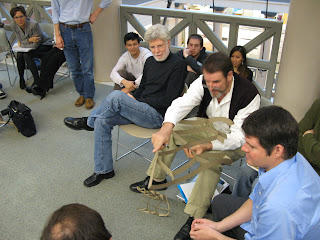Living in Shelters
The Future of the Cavern
Opening: Thursday, February 28th, 2008, 7.30 pm Mariahilfer Strasse 1b se 1b, 1060 Vienna/Austria
Duration: February 29th, 2008 - March 18th, 2008
Opening hours: Mo – Fr: 9 a.m. – 5 p.m.,
Do: 9 a.m. – 7 p.m.
http://www.kiesler.org/cms/index.php?lang=3&idcat=88
For the first time in an exhibition, the Kiesler-foundation confronts the two models Grotto for Meditation and Endless House. Both concepts are characterized by the artists research for a form, which attempts to satisfy both practical and spiritual human demands, in order to provide men a livable and adequate environment.
Working on a construction (which was close to Philip Johnsons Roofless Church in New Harmony, Indiana) for the successors of Robert Owen (1771-1858), an early socialist and founder of the cooperative system, Kiesler found in 1962 an opportunity to verify his co-realistic theories in the built practise. The design of the Grotto for Meditation refers to the history of the social-reformatory movement of the location, but first of all, it should represent a room of meditation, a universal form beyond all religious denominations.
Similar to the Endless House, Kiesler gets inspired by morphologic formal vocabulary and chooses the motif of a spiral, for the artist a symbol for change and assimilation. The centre of the complex is built in form of a snail. This form combines the centrifugal power, the expansion to the infinity, with the centripetal power, which approaches the individual towards contemplation.


























